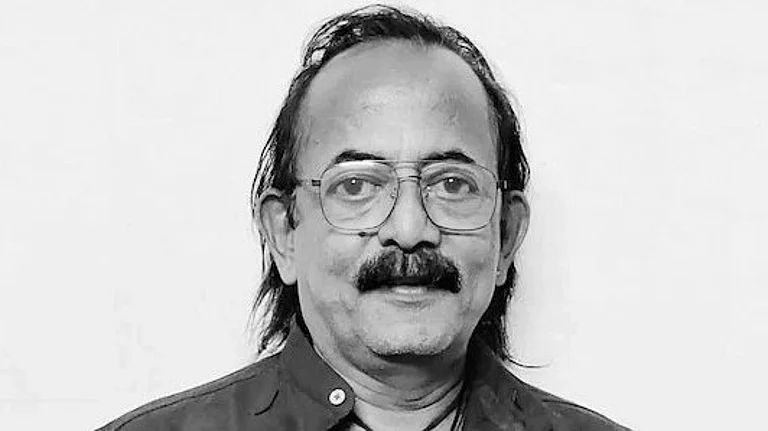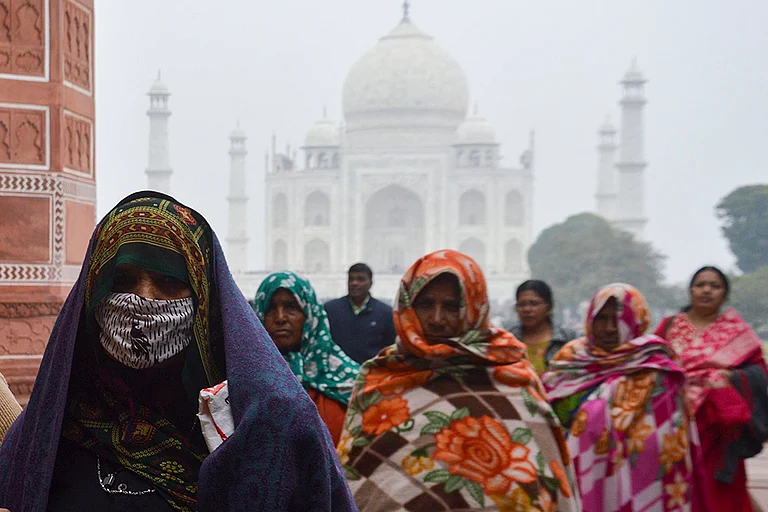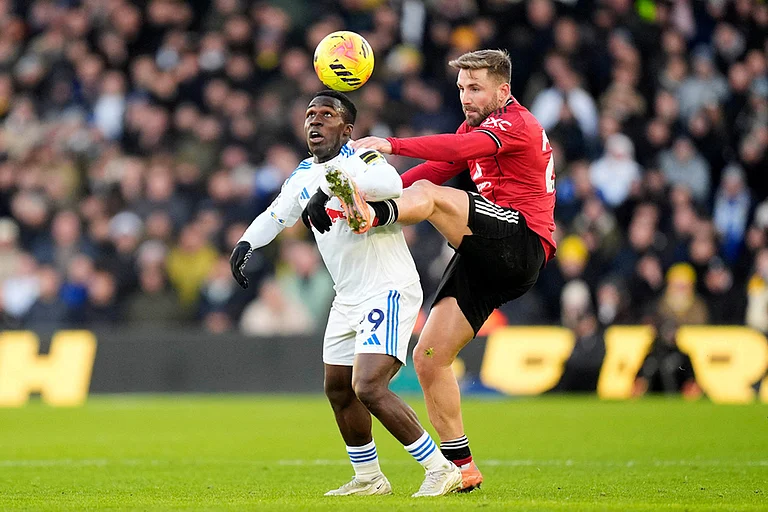I was drawn towards Kamathipura, curious and enthused with an academic idealism and naïveté, proceeding with an assurance to find enough contentions necessary for a graduation thesis in architecture with social justice as premise. This very assurance stemmed from my cinematic perception of the infamous neighbourhood, even before laying foot on my assumed potential ground, only to find that I was not the first or the last to arrive at its threshold, seeking.
A familiar Kamathipura featured in the 2018 Mrunal Thakur starrer, Love, Sonia, with brothels thriving on trafficking young women from rural hinterlands, tricked through promises of lucrative employment in the heart of Maximum City. A 2019 raid rescuing 141 girls held behind trap doors and steel cages, raised a poignant question—how long will art continue imitating life?
On my very first visit, I chose to stop at Nagpada junction, deflecting any speculation or even momentary judgement from the cab driver. For these reasons, the proposition of my work was titled Destigmatising Kamathipura, aimed to envision a ‘future perfect’ version, farthest from its singular and skewed public imagination, while giving utmost consideration to the lives that are definitive of its reputation. Sitting back in the cab, looking out towards tall high rises of the island city, I became conscious that the project should not be a cannibalistic undertaking, where it’s flourishing is at the expense of the bodies that bear the brunt of making an often heard “... Mumbai is safer for women than New Delhi, thanks to Kamathipura...” analogy. Much like the bodies with sclerosis who constructed the dreamscape skylines credited to real-estate giants. But now as I think of it in retrospective, ironically, that is exactly how it has always been with every outsider who sought anything from Kamathipura; those coming to it driven by a self-actualising creative urge or a primordial sexual urge. I remember Ganesh Gaitonde’s reference in Vikram Chandra’s novel Sacred Games to Mumbai as a Saatvik city that has only ‘given’. Kamathipura too bears those very attributes; it is Mumbai in a microcosm.
Landing at the Nagpada junction, I spotted a recent installation of a towering Indian Tricolour—redolent of the 1950s constitutional promises of Justice, Liberty, Equality & Fraternity, and Sahir Ludhianvi’s Jinhe Naaz Hai Hind Par Woh Kahaan Hai? from Guru Dutt’s 1957 movie Pyaasa—hoisted across a street where these very values of sacrosanct enshrinement have always been overlooked by the state and the people. In the 50s, the neighbourhood, though a shred of the British colonial legacy, escaped Morarji Desai’s crackdowns on ‘social vices’ in the city, setting up a precedent that allowed these so-called ‘immoral’ activities to perpetuate unabated till date as a ‘necessary evil’ to maintain the sanity of the large male migrant work force in Mumbai. As for the passers-by, life goes on, with minuscule engagement from this spooky ‘eye-sore’ of a place. Thus, ignoring it with eyes closed, as if in deep meditative contemplation—is the most effective method to bypass, than confront the societal bias that labels this place as the city’s only vice district, where female autonomy has had an upper hand. Apart from its history of trafficking and violence, Kamathipura has been host to women hailing from far flung areas, granting them safety and anonymity to solicit for their livelihood.

To tread such a sensitive subject and diverse territory, there is a range of convenience operational for every outsider, who took both digs and chances to narrate its story. Kamathipura’s reputation has always been, as what was intended by the state—a container of all degenerate influences, a cesspool where all activities deemed immoral were tolerated. The likes of Guru Dutt, Saadat Hasan Manto, Mira Nair and Sahir Ludhianvi, might have disagreed with the ‘cesspool’ attribution, as it was the exact same space, brimming with an undercurrent of ‘interesting’ conflicts and characters that served as inspiration for celluloid, prose & poetry. Or a graduate thesis like mine, chartering into a contested academic venture, in an area where people suffer from ‘research fatigue’ being subjects of numerous studies and documentaries, attracting film-making professionals from as far as Russia and the United Kingdom, to no avail. The only glory derived from such a venture thus is reserved for the artist—the outsider, becoming names to reckon with, while their character inspirations lurk in absentia. In the process, the naïve seekers become the humane among humans back home, to acknowledge and feel for their subjects—the ill-fated downtrodden and the marginal.
“... Unlike the physical landscape of a city or a place, that is static in scale and size, the imagined landscape can expand or shrink based on one’s experience... Kamathipura just occupies a blip in the imagined landscape of a large population, any project there, should try and attempt to make that blip a blob... to underpin that it is not as monotonous as they think it is...” This advice from Danish Husain helped me to make a resounding judgement on a lot of works that I had come across. Mira Nair’s Indian Cabaret (1985) and Salaam Bombay (1988) did that ‘exercise in expanding imagination’ exceptionally well, to portray the lives of the invisible yet omnipresent and anonymous characters — Chai Pao (the protagonist), Sola Saal (a 16-year-old Nepali girl), and Chillim (the drug peddler). More so, establishing the Salaam Baalak Trust was an act of sisterhood making things come full circle — of taking, as well as giving back. The extra miles treaded despite receiving worldwide acclaim was definitive of how Kamathipura was approached by a woman, as opposed to men.
Every relationship is summed up on what note one finally decides to part ways. It was why I was sceptical of a Bhansali venture musing Kamathipura. His previous enterprise Padmaavat applied too broad brushes, distorting my notion of the Tricolour in Nagpada and elsewhere, of saffron valour and barbaric greens, befitting the politics of convenience from who is considered the master of aesthetic and colour. Would such an attempt of convenient categorisations encapsulate the diversity of Kamathipura? I did speculate back then, that even if it does not bear the nuance to showcase how the neighbourhood has harboured a sub-culture—a melting pot; accommodating the subaltern outcasts—transgenders, sex workers, the homeless pavement dwellers, while accompanied with all accoutrements of dramatised glamour, typical of the Bhansali universe, there won’t be as a strong backlash of misrepresenting a factual place and people. More so to name it after Gangubai, who did exist, with an ease, unlike the ordeal of his former project; a fiction originally composed by Malik Muhammad Jayasi with last moment spelling alterations, a courtesy to the outraged public sentiments.
ALSO READ: Kamathipura Redevelopment But For Whom?
A Tumblr thread narrating experiences of a woman said “... sex workers & trafficked women have been saying this forever. Your fathers, husbands, brothers, co-workers & friends—they come to us and do disgusting things. They pick us out because we resemble you. They call us by your names. Every single night, I hear, ‘My wife/girlfriend is a prude...’ They make excuses that they have to do this because you won’t let them.... they go back to being grateful that we exist to absorb this violence, so that they don’t have to deal with it…” Kamathipura represents subject matters and characters that can be easily borrowed, and gotten away with a good riddance, as other subjects, even fiction (like Padmaavat), don’t relent as much freedom. In the purview of the Bhansali-fied layering on Kamathipura, ‘the gaze’ with which the curious and the interested have through sheer accident of birth escaped the fate met by those who’ve found acceptance within these 16 ‘unsavoury’ bylanes; the area seems to be a Sankat-Mochan, addressing the seekings of all those who seek, yet paying a price in a currency of countless human bodies and potentialities nipped in the bud. Perhaps, that is why the founder of Dalit Panther movement, and a Kamathipura insider, poet Namdeo Dhasal, wrote of the area in anticipation, “... This is pain wearing a dancer’s anklets... I go beyond all the pleasures and pains of whoring and wait, for your lotus to bloom.”
Giving and blessing all along its existence, while itself staying unchanged, as a recurring subject that needs saving or sanitisation. An archival of ‘what could’ve been’ of the thousands trafficked. Its portrayal consistently stoking gratefulness among all those on its other side, composing prose and poetry, and profiteering from it, making the naïve, wise—with a currency, so expensive. I wonder how much permeates beyond a cinematic moment of truth and staged artistic representation of all its shades. Amid its contradictions, fulfilling all kinds of extractive intents, the resilient existence of the vice district and its overlap with devotees headed to temples and mosques here, too evoked a temptation to dabble in Instagrammable musings, but I have held back, thinking, what if she doesn’t want to be anyone’s poetry?
(This appeared in the print edition as "Of Whoring and Waiting")
(Views expressed are personal)
ALSO READ
Majid Abidi is a nagpur-based artist and architect




















